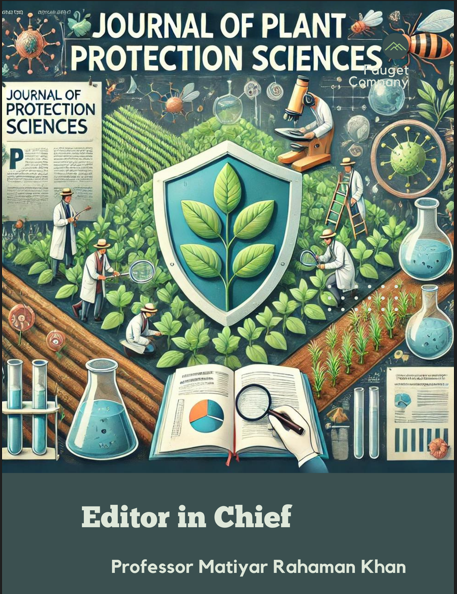Influence of abiotic environmental factors on incidence of melon fruit fly (Bactrocera cucurbitae Coq.) on bittergourd
DOI:
https://doi.org/10.48165/Keywords:
Meteorological, humidity, MaggotsAbstract
Bittergourd (Momordica charantia L.) is an important vegetable crop cultivated exten sively in the subtropical and tropical coun tries. For cucurbits, especially bitter gourd, the melon fruit fly (Bactrocera cucurbitae Coq.) damage is the major limiting factor in obtaining good quality fruits and high yields (9). Extent of yield loss caused by the pest to cucurbitaceous vegetables ranged from 30 to 100% depending upon cucurbit species and the season in different parts of the world (4). The melon fruit fly activity varies a lot de pending mostly on the prevailing climatic conditions and the diversity of other hosts in a particular agro-ecosystem (3). In view to de termine the appropriate time of action and suitable management practices to be adopted regular crop pest surveillance and monitoring needs to be developed. Keeping these facts in mind, study was carried out on periodicity of occurrence of melon fruit fly in relation to various abiotic environmental factors as a help to evolve an effective and economical strategy of management. The experiment was conducted at the Incheck farm, ‘C’ Block, Bidhan Chandra Krishi Viswavidyalaya (BCKV), Kalyani, Nadia, West Bengal which was located at 22.50 N latitude and 88.220 E longitude at an elevation of 9.75m above sea level during two consecutive years i.e. 2010- 2011 and 2011-2012 from the December fort night to March fortnight. Local variety, Medinipore Garbeta was replicated two times of plot size 8m2(2m×4m) with a plant spacing 100cm × 40cm following all agronomical practices excluding plant protection. Observa tions on incidence of melon fruit fly was re corded on the basis of number of fruits dam aged by the pest at seven days interval at early hours during the whole period of crop grow ing season. Maggots per infested fruits were counted. These data were later converted to maggot population per fruit with formula used by Barma and Jha (2).
References
1. Banerji R Sahoo SK Das SK Jha S. 2005 Journal of Entomological Research 29:378-19.
2. Barma P Jha S Banerjee S. 2013 African Journal of Agricultural Research 8: 4740-47.
3. Barma P Jha S. 2013 The Bioscan 8: 537-43.
4. Dhillon MK Singh R Naresh J Sharma HC. 2005 Journal of Insect Science 5: 40.
5. Krishna Kumar NK Verghese A Shivakumara B Krishnamoorthy PN Ranganathm HR. 2006 In Proceedings of the 7th International Symposium on fruit flies of economic Importance, pp. 249-53.
6. Laskar N Chatterjee H. 2010 Journal of Applied Sciences Environmental Management 14: 53-58.
7. Patel RK Patel CB. 1996 Indian Journal of Ento mology 58: 239-44.
8. Raghuvanshi AK Satpathy S Mishra DS. 2012 Journal of Plant Protection and Research 52: 264-67.
9. Shooker P Khayrattee F Permalloo S. 2006 Bio control and other control methods, available in httpwww.fcla.edu/FlaEnt/fe87 p354.pdf.

